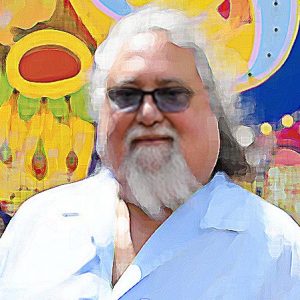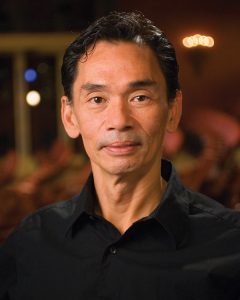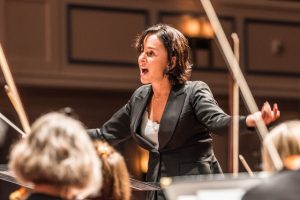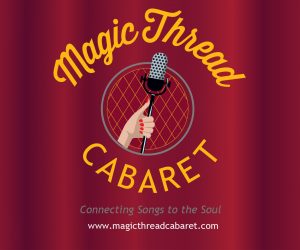Like everyone else, especially since yesterday when Governor Eric Holcomb ordered Indiana’s residents to stay home until April 7, I have been sheltering in place and only going out for essential activities. That means, again, like everyone else, I am using social media and the Internet as my lifeline to stay connected to family, friends and the world in general. For anyone who reads my blog or follows me on social media, you know much of my time is spent attending and reviewing performing arts events. Now that all performances have been postponed or canceled and theatres and venues are closed, my coverage is severely limited. However, that doesn’t mean I can’t still share news about the arts community during this unprecedented world crisis.
In the coming days and weeks until things return to normal, I hope to profile artists and arts organization in the hopes I can do my part to support them by sharing their stories. In that spirit, I recently sent emails to a group of artistic directors asking them to answer a series of questions about how the pandemic is affecting them and their organizations. They are Janet Allen of Indiana Repertory Theatre, Bryan Fonseca of Fonseca Theatre Company, Gregory Glade Hancock of Gregory Hancock Dance Theatre, David Hochoy of Dance Kaleidoscope, Janna Hymes of Carmel Symphony Orchestra and Victoria Lyras of Indianapolis Ballet.

Janet Allen – Courtesy of Indiana Repertory Theatre. Used with permission.
How has the crisis impacted your organization?
Allen: Deeply and quickly. We are tracking a potential loss of approximately $500,000 between now and August. And that’s assuming we can go back into rehearsal on time in August to create a new season. We have begun to apply budget savings to our already-approved budget for 20-21 and will likely do much more in hopes of being able to get next season up.
Fonseca: It’s crippling.
Hancock: We have had to cancel and postpone performances and lay off dancers. Again, because there are so many unknowns still ahead of us, it is difficult to understand what the long-term impact on organizations may be. We have not yet made a decision to cancel the entire season, but following the guidelines of our government and making thoughtful decisions as we move forward. We hope that when the situation improves and we go back to our quasi-normal life that people may appreciate and understand the value of live arts on a new level and will support all the arts organizations of our community.
Hochoy: We have had to cancel and postpone performances and fundraising events. The pandemic has put a severe economic strain on us, as it has with everything else. We are having to strategize as to how we are going to weather the storm so that we can survive.

Bryan Fonseca – Courtesy of Fonseca Theatre Company. Used with permission.
Hymes: We had to reschedule two concerts and cancel one, but we are using the time wisely. Our board and committees are still meeting and a lot of administrative work is getting done. The only thing missing are meetings in the same room and live performances, which of course, creates a void for the artistic staff and musicians.
Lyras: It is devastating without any income coming in.
How has the crisis impacted the artists you oversee?
Allen: Significantly. Many artists lost precious work weeks, which equals paychecks, as we have closed seasons and many have lost commensurate health weeks, which will mean that people run the risk of losing their health insurance. That’s just for the freelance union personnel. The risk to our artisans has more to do with whether we will be able to go back into rehearsal in the late summer and mount the next season on time. If we can’t, it will deeply impact many artisans and staff members.
Fonseca: With no productions going on, everyone is laid off. I assume each artist is dealing with that in individual ways. We recommend filing for unemployment immediately.
Hancock: Our dancers are laid off. With performances canceled and/or on hold, we cannot keep dancers working with so many unknowns ahead of us. The Academy of Greg Hancock Dance Theatre, a training facility for young dancers, is also closed. We are doing some online classes for the students to keep them active and moving, but of course, it’s not the same as physically being in the studio.
Hochoy: We have had to stop all classes and rehearsals. The dancers are trying to stay in shape by joining online classes. All of them have lost their secondary jobs (restaurant, teaching, etc.) For them, the financial situation is grave.

Gregory Glade Hancock – Courtesy of Gregory Hancock Dance Theatre. Used with permission.
Hymes: It has been devastating. Carmel Symphony Orchestra was ready to perform a Masterworks Concert with soloist Edgar Meyer and a side-by-side concert with the Carmel High School Orchestra when we heard the Palladium would be closing. We literally stopped in our tracks. Many of the musicians I work with in Carmel and around the world are facing great difficulty with canceled performances and uncertainty of the future. This is a gig economy and for many, this is a scary time for them.
Lyras: The crisis has impacted us on several levels throughout our organization. Indianapolis School of Ballet classes have been canceled for the remainder of the semester. For the first time in 14 years, our students’ semesters will end without ISB’s showcase, “May We Dance,” a much-beloved celebration of our young artists’ hard work. As for the Indianapolis Ballet, we are a young professional company, without reserves or an endowment. We officially postponed “Sleeping Beauty,” originally scheduled for mid-April. The quarantine means we are no longer holding rehearsals, which means that our company dancers are currently on lay-off — without pay.
What would you like artists to know?
Allen: Keep safe, keep creating, the world needs you.
Fonseca: We’re doing everything we can to come back stronger than before. Stay safe and optimistic.
Hancock: My motto in this crisis is “This too shall pass.” During times like this, we need art more than ever. I encourage colleagues to continue to find ways to create art. For artists who always work alone, this is a time to find more and new creativity. For artists who depend on other artists to fulfill their visions, this gives us opportunities to explore our work in new ways as well.
Hochoy: We are all in this together. The world needs our art. When this crisis is over, we will spring to life again. Together.
Hymes: I want artists to know that while this is unknown territory, we will come out stronger and together. Artists have an unbelievable way of surviving and we have proven that time and time again — WWII, Vietnam, 9/11 — all examples of devastating times with great art being produced. This is temporary. I love all the people I work with and cannot wait to get back together. We have their backs and we hope to reschedule all but one concert. We are paying the CSO musicians for the preparation of the concert we did not perform and we are hoping to find ways to help them during this time of need.

David Hochoy – Courtesy of Dance Kaleidoscope. Used with permission.
Lyras: I want our dancers, both professional and student, to have faith through this difficult time — that we love them and cannot wait to resume our passion for this beautiful art form of classical ballet.
What would you like the public to know about how they can help your particular organization moving forward?
Allen: If you can, donate your tickets rather than get a refund. Continue to make your annual contributions if you can. Continue to invest in the art you care about. This will be a devastating time for performing arts organizations in particular.
Fonseca: It’s hard to say help us over others, but choose wisely. What do you want the new world to look like?
Hancock: All arts organizations are going to need assistance as we move forward through this unprecedented time in our world. Perhaps audiences will feel deprived of live art and will be ready to come out and support organizations in abundance, but we also realize this is a precarious situation for everyone. All we can do is hope that the public will realize the value and impact of art on our lives.
Hochoy: Please keep us in your hearts and minds, and help us financially if you can with a donation.
Hymes: If people can donate or exchange their tickets, rather than ask for refunds, this will help us tremendously. If they can subscribe to our 2020-21 season as soon as we announce, that would also be helpful. Any donations they planned on giving and want to send in early will ensure that we can ride out the next few months with no devastation.
Lyras: Our curtains will rise again. Once we get through this, we encourage the public to support the arts by going to performances and contributing in any way they can. For our organization, this can mean donating your ticket funds in lieu of a refund, attending a performance, purchasing a subscription to our upcoming season, or simply making a tax-deductible donation.

Janna Hymes – Courtesy of Carmel Symphony Orchestra. Used by permission.
How are you personally impacted?
Allen: High stress and constant crisis management — as well as likely layoffs and furloughs.
Fonseca: I am laid off, but still need to work for the organization as a volunteer to file for SBA loans and deal with monthly invoices.
Hancock: I care passionately about my work. I miss may dancers and students terribly. I am fortunate to have a job where I am able to create, hear music and see dance all day. Many years ago, I realized so much of who I am is defined by what I do. This is extremely personal, but during this time, I have done much reflection of who I am without dance.
Hochoy: I cannot teach or create. I miss interacting with my dancers every day. I miss seeing my close friends.
Hymes: I am taking this time to focus on administrative work which, as an artistic director, is time-consuming and a daily focus. I am busy working, planning and video conferencing every day, which helps tremendously. Much of my time is spent alone studying anyway, so being housebound in my office is quite normal. What is hard is that I am not with people for meetings and rehearsals/concerts, but I am keeping motivated and using the time to reflect and plan the future. I am keeping in touch with everyone — family, friends, staff and continuing to be available for those who might need me.
Lyras: Personally, I am heartbroken for the state of the world through this nightmare. I’m following guidelines to stay safe. I’m continuing to build costumes remotely for “Sleeping Beauty” and now, making face masks for those in need.
Do you think a lot of art will be created during this period?
Allen: If the online desire to share music and monologues is any indication of artists’ unquenchable desire to reach out and make art, yes. Solo art forms may thrive. Group art forms likely won’t. Live theatre is a system which, by nature, doesn’t lend itself well to media transmission: our union agreements make it costly and cumbersome; our licensing agreements practically forbid it. Those barriers can seem insurmountable. Even with collective bargaining, we’ve struggled to get this lined up for one production.
Fonseca: Absolutely. I also see artists finding new ways to create on new online platforms.

Victoria Lyras – Courtesy of Indianapolis Symphony Orchestra. Used with permission.
Hancock: Absolutely! Well, for some of us, it will be more about ideas for future art and creativity, but art is always inspired by our environments, situations and challenges. Writers and visual artists can certainly continue to create and be inspired. For a choreographer, it is perhaps more challenging to work as we rely on other artists to fulfill our visions, but again, we can certainly explore new ideas, music, themes, and even develop new movement styles through forced isolation.
Hochoy: I don’t know. I think that anything that is “solitary” might have a chance. Creating dance is definitely, for me, a social action. I need the inspiration of having my dancers around me.
Hymes: Yes, many artists are taking the time to reflect and create. The issue I hear, and sometimes feel myself, is that feeling motivated comes and goes. I have great energy and spurts of creativity, but sometimes I feel like I hit a wall, which feels foreign. I am not the only one feeling this way, from what I am reading and hearing.
Lyras: Undoubtedly, some amazing art has been created in the middle of a crisis like the one we’re currently in. But the creative process that goes on in the studio cannot be replaced in a state of quarantine. For now, I believe the arts sector will continue to create and share our passions, through limited resources, with social media. As artists, we’re being called to be of service in a new way — to inspire, educate, and uplift…all virtually.
If there a bright side to this crisis?
Allen: Forcing all people to be reflective (as quarantine does) rather than simply nonstop busy has its upsides, particularly for art makers who tend to have too little reflective time in the mad dash to make a living. Some good art can come from that.
Fonseca: It is hard for me to say.
Hancock: Of course! I believe great beauty and creativity can arise from hardship, challenges, and chaos. Artists must continue to lead the way and share with the world beautiful visions that inspire and uplift our lives.
Hochoy: It has forced us to slow down, reflect, meditate on our lives and re-discover our priorities as human beings.
Hymes: Times like this bring the world together and I’m hoping there will be more universal kindness. Maybe some of the negativity we see and hear will be reduced and a little more tenderness, agreeability and fairness will reside. This pandemic should make us more caring, less greedy and selfish and we should appreciate just how great life can be. I hope we will be more aware of our health and more respectful and sympathetic to others. Similar to the virus, music shows no boundaries, but while the virus destroys, music can rejuvenate, heal and inspire.
Lyras: It unifies the artists and community to work, help, love, and support each other through the arts.
To donate to all the organizations mentioned in this story visit their respective websites. Indiana Repertory Theatre, Fonseca Theatre Company, Gregory Hancock Dance Theatre, Dance Kaleidoscope, Carmel Symphony Orchestra and Indianapolis Ballet.





